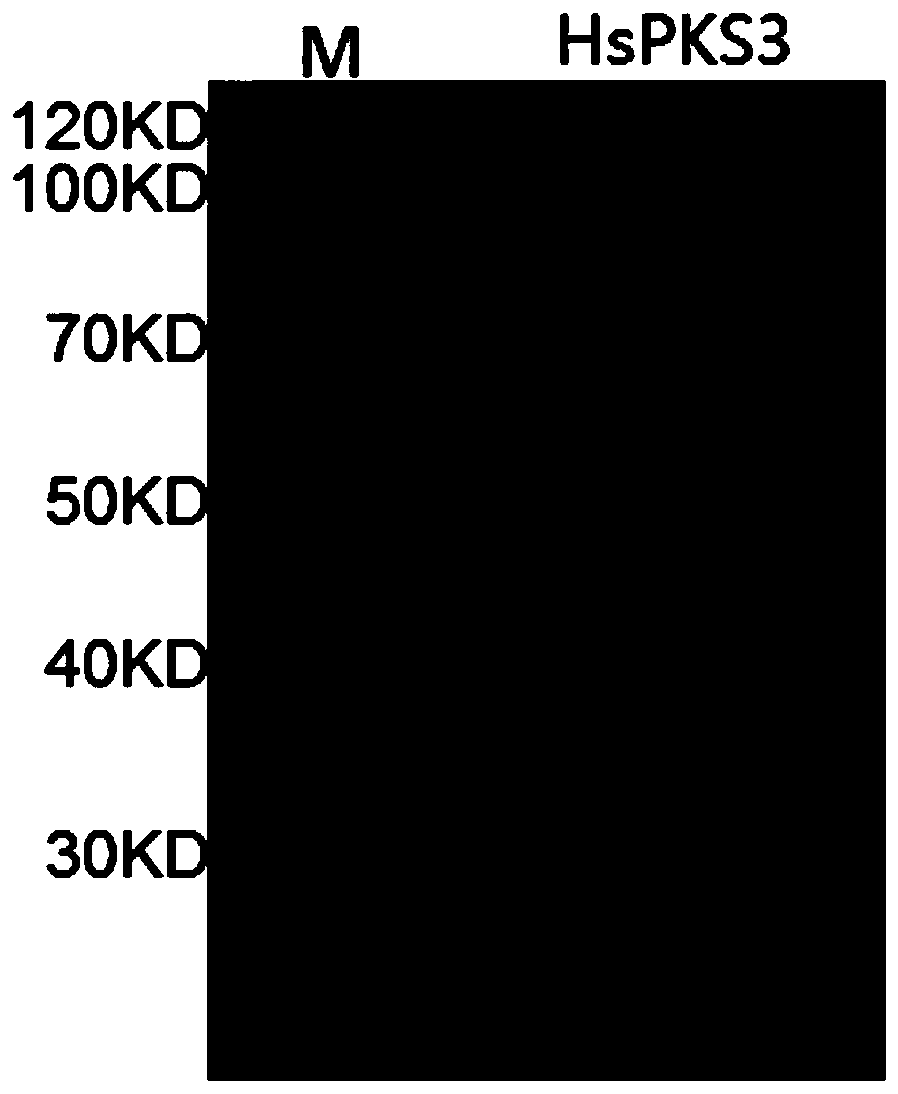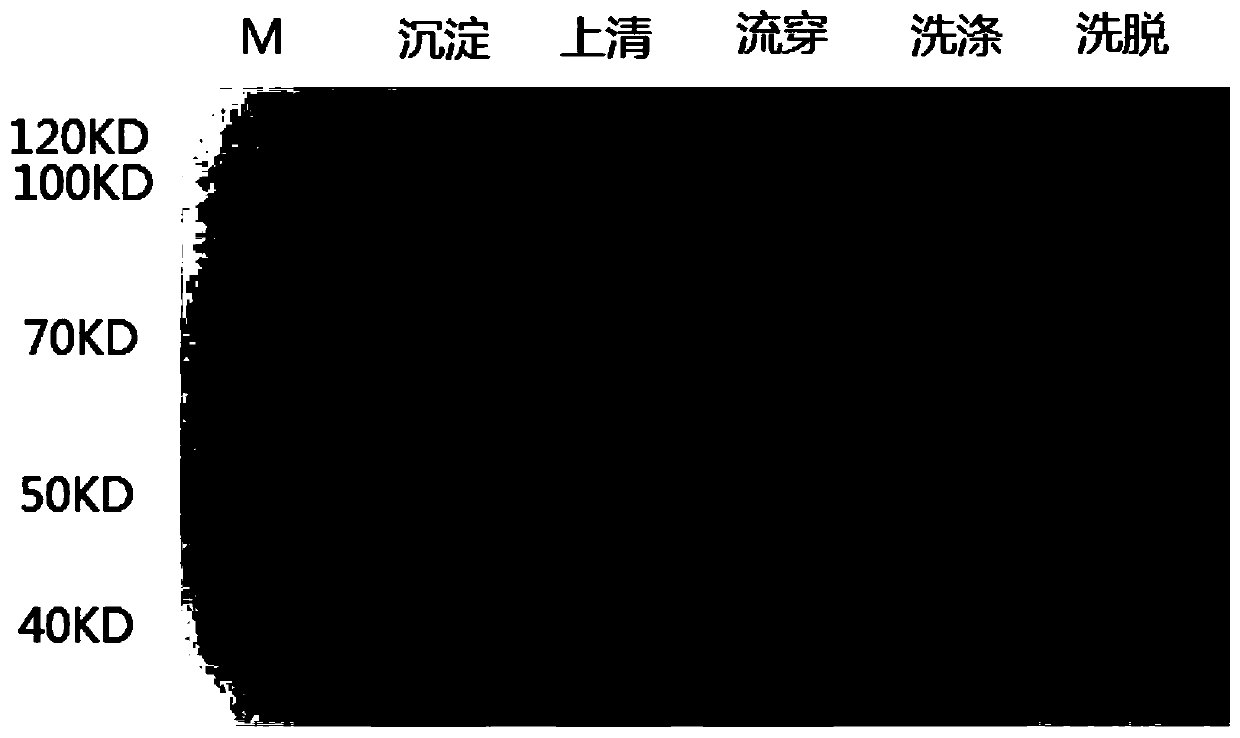Method for synthesizing quinolizine ketone compounds by enzyme method
An enzymatic synthesis and compound technology, applied in the direction of fermentation, can solve the problems of unfriendly environment and high price of reaction reagents, and achieve the effect of avoiding unfriendly environment of reaction reagents
- Summary
- Abstract
- Description
- Claims
- Application Information
AI Technical Summary
Problems solved by technology
Method used
Image
Examples
preparation example Construction
[0032] The traditional preparation methods of quinazinone compounds all adopt chemical synthesis methods, and most of the synthesis methods cannot avoid problems such as harsh reaction conditions, the use of expensive rare metal catalysts, and unfriendly reaction reagents. The present applicant unexpectedly found that using type III polyketide synthase to enzymatically synthesize quinazinone compounds can realize green synthesis, avoiding the use of expensive rare metal catalysts and unfriendly reaction reagents. In addition, by using type III polyketide synthase to synthesize quinozinone compounds by enzymatic method, the remodeling of the synthesis pathway of quinozinone compounds in microorganisms can be provided to provide necessary gene elements.
[0033] The method for enzymatically synthesizing quinazinone compounds of the present invention comprises: adopting type III polyketide synthase to synthesize quinazinone compounds by enzymatically. The type III polyketide synt...
Embodiment 1
[0072] Example 1 Preparation of polyketide synthase HsPKS3 in Huperzia serrata
[0073] The expression strain (Org. Lett., 2016, 18, 3550-3553) containing the HsPKS3 gene (SEQ ID NO: 1) was added to 10 mL of LB liquid medium at a volume ratio of 1:100, and activated overnight at 37°C; Among them, the LB liquid medium contains 50 μg / mL of kanamycin. The next day, amplify the LB liquid medium, and still add the expression strain containing the HsPKS3 gene to the LB liquid medium at a volume ratio of 1:100, and culture it with shaking at 37°C until OD 600 Between 0.4 and 0.6, 1 vol‰ of 1M IPTG was added, and the expression was induced at 23°C for 16 hours. Centrifuge at 4°C, 7500×g for 5 minutes, and collect the bacteria.
[0074] The collected bacteria were resuspended in pre-cooled lysis buffer, 1vol‰ of PMSF was added, and the cells were ultrasonically disrupted in an ice bath. The ultrasonic breaker is set as follows: break for 2 seconds, stop for 4 seconds, and break fo...
Embodiment 2a
[0075] The preparation of embodiment 2a pyridine acetyl coenzyme A
[0076] ① Cloning and expression of phenylacetyl-CoA ligase PCL cloned and expressed in Penicillium chrysogenum:
[0077] Penicillium chrysogenum MT-12 was isolated and purified from Huperus serrata, and identified by ITS rDNA sequencing (GenBank accession number MF765611).
[0078] According to the full-length sequence (SEQ ID NO:2) of the phenylacetyl-CoA ligase PCL (AJ001540) gene in Penicillium chrysogenum recorded in NCBI, the forward and reverse specific primers PCL-F-EcoR I were designed and PCL-R-Hind III, using Genomic DNA of Penicillium chrysogenum (code: MT-12) as a template, PCR amplification by PyrobestTM DNAPolymerase, the target sequence was obtained in full length 1737bp, encoding 563 amino acids. Construction of recombinant plasmid pMAl-C 2 X-PCL was transformed into E. coli expression strain E.coli BL21(DE3). A single colony of positive clones selected by colony PCR was inoculated into 1...
PUM
 Login to View More
Login to View More Abstract
Description
Claims
Application Information
 Login to View More
Login to View More - R&D
- Intellectual Property
- Life Sciences
- Materials
- Tech Scout
- Unparalleled Data Quality
- Higher Quality Content
- 60% Fewer Hallucinations
Browse by: Latest US Patents, China's latest patents, Technical Efficacy Thesaurus, Application Domain, Technology Topic, Popular Technical Reports.
© 2025 PatSnap. All rights reserved.Legal|Privacy policy|Modern Slavery Act Transparency Statement|Sitemap|About US| Contact US: help@patsnap.com



